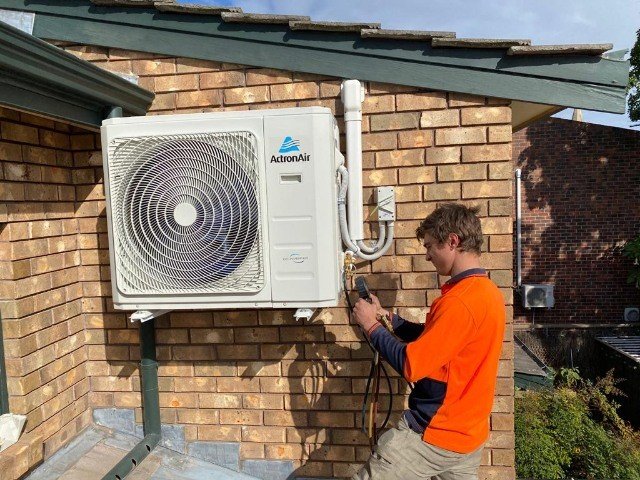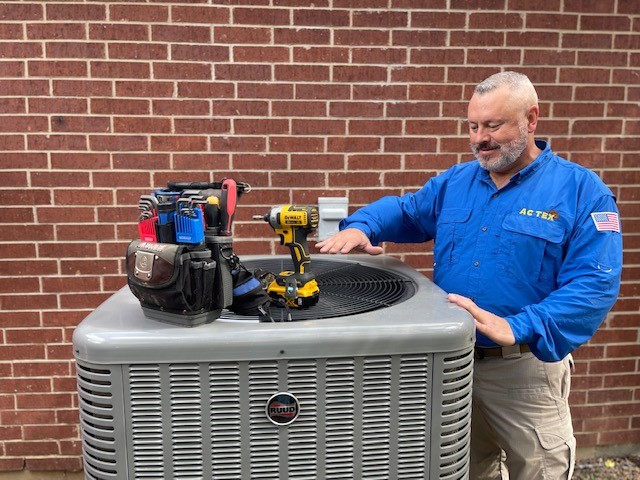Air conditioning (AC) has become a ubiquitous part of modern life, offering a reprieve from the summer heat and creating comfortable indoor environments year-round. Whether it’s cooling down a home, office, or vehicle, air conditioners provide much-needed relief. However, as essential as they may seem, the environmental impact of air conditioning is significant, contributing to energy consumption, greenhouse gas emissions, and resource depletion. As the global temperature rises, so does the demand for air conditioning, leading to an increased strain on the environment. In this blog post, we’ll explore the environmental effects of air conditioning and discuss practical ways to reduce its impact.
The Environmental Footprint of Air Conditioning
- Energy Consumption
One of the most obvious environmental impacts of air conditioning is the amount of energy it consumes. Air conditioners are energy-intensive appliances, typically running on electricity, often generated by burning fossil fuels like coal, natural gas, or oil. In regions with hot climates, air conditioners can account for a large percentage of a household’s or building’s energy use. According to the U.S. Department of Energy, air conditioning accounts for about 6% of total energy consumption in the United States.
The energy demand for air conditioning leads to higher electricity generation, often relying on non-renewable sources, which contributes to environmental degradation. The burning of fossil fuels releases carbon dioxide (CO2) and other greenhouse gases (GHGs) into the atmosphere, exacerbating climate change. The more air conditioners that are used worldwide, the greater the strain on global energy systems, pushing us closer to tipping points in environmental sustainability.
- Greenhouse Gas Emissions
Air conditioners work by using refrigerants—chemicals that facilitate heat exchange and lower indoor temperatures. While these refrigerants are essential for the cooling process, they also have a profound environmental impact. Traditionally, many air conditioners have used hydrofluorocarbons (HFCs), which are potent greenhouse gases. HFCs are thousands of times more effective at trapping heat in the atmosphere than CO2, making them a major contributor to global warming.
Though the use of HFCs has decreased due to international agreements like the Kigali Amendment to the Montreal Protocol, which aims to phase out the use of these chemicals, they still remain widespread in many older systems. Newer systems often use alternative refrigerants, such as hydrofluoroolefins (HFOs) or natural refrigerants like carbon dioxide (CO2) and ammonia, which have less harmful environmental effects. However, the transition is slow, and many air conditioners still rely on outdated technology.
- Resource Depletion
The manufacturing, installation, and disposal of air conditioning units also pose environmental challenges. Air conditioners require significant resources, such as metals (e.g., copper, aluminum), plastics, and other materials, which must be mined, processed, and transported, consuming both energy and natural resources. Moreover, the extraction and production processes contribute to habitat destruction, pollution, and resource depletion.
At the end of their lifecycle, air conditioners often end up in landfills, where they can release harmful chemicals into the environment. For instance, the refrigerants used in AC systems may leak out as the units are discarded, further contributing to pollution. While some parts of old air conditioners can be recycled, the overall recycling rate for AC units remains low, exacerbating the environmental footprint of these devices.

How to Reduce the Environmental Impact of Air Conditioning
Although air conditioning is an essential tool for managing heat in many parts of the world, it’s possible to reduce its environmental impact through smarter choices and more sustainable practices. Here are some strategies to lower the ecological footprint of air conditioning:
- Switch to Energy-Efficient Models
One of the most effective ways to reduce the environmental impact of air conditioning is by investing in energy-efficient models. Modern air conditioners are far more efficient than older models, thanks to advancements in technology and more stringent energy efficiency standards. When shopping for a new AC unit, look for models with the ENERGY STAR label, which indicates that the system meets high energy efficiency standards.
In addition to choosing energy-efficient units, it’s important to properly size the air conditioner for your space. An oversized unit will consume more energy than necessary, while an undersized one will have to work harder to cool the space, wasting energy and increasing wear and tear. Consulting a professional for accurate sizing can prevent these inefficiencies.
- Use Programmable Thermostats
A programmable thermostat allows users to set the temperature based on their schedule, ensuring that the air conditioner is not running unnecessarily. For example, you can program the AC to cool the house only during certain hours, like when you’re home, and allow the temperature to rise during the night or when you’re away. This simple adjustment can reduce energy consumption significantly without sacrificing comfort.
Smart thermostats, which can be controlled remotely via smartphone apps, provide even greater control over your air conditioning system. Some models can learn your behavior patterns and adjust temperatures automatically, optimizing energy use without manual intervention.
- Improve Insulation and Sealing
Poor insulation is a common reason air conditioners have to work harder than necessary. Inadequate insulation and air leaks around doors, windows, and ducts allow cool air to escape while warm air seeps in, causing your air conditioner to overcompensate. To address this issue effectively, consider improving insulation and sealing leaks to maintain a consistent indoor temperature. Additionally, scheduling regular maintenance, such as Bukit Panjang aircon servicing, can ensure your air conditioner operates efficiently, saving energy and reducing overall costs.
Consider adding weatherstripping around doors and windows, sealing gaps in the attic or basement, and ensuring your insulation is up to standard. For even better results, install reflective window films or shades that reduce heat absorption from the sun, making it easier for the air conditioner to maintain a comfortable indoor temperature.
- Utilize Natural Cooling Techniques
Before resorting to air conditioning, consider utilizing natural cooling techniques to keep your living space comfortable. This can include strategies such as:
- Using fans: Ceiling fans, box fans, or exhaust fans can circulate air and provide relief without the need for air conditioning.
- Closing blinds and curtains: During the hottest part of the day, keep blinds and curtains closed to block out the sun’s heat.
- Ventilating at night: Open windows during cooler evening hours to allow fresh air to circulate and cool down your home.
- Green roofs and shading: Planting trees or installing green roofs can help block direct sunlight and keep the surrounding air cooler.
- Maintain Your Air Conditioner Regularly
Regular maintenance is essential to ensure that your air conditioner is running as efficiently as possible. Clean or replace the air filters regularly, as clogged filters reduce airflow and force the system to work harder. Additionally, ensure that the condenser coils are clean and that there are no obstructions around the outdoor unit. Routine maintenance will improve the performance and lifespan of your air conditioner, reducing the need for frequent replacements and repairs.
- Opt for More Sustainable Refrigerants
When replacing or installing a new air conditioning system, choose models that use eco-friendly refrigerants. Many newer air conditioners now use refrigerants with lower global warming potential (GWP), such as R-32 or R-290. These alternatives have a much smaller environmental impact than older refrigerants like HFCs and HCFCs, contributing less to climate change.
- Consider Alternatives to Air Conditioning
In some climates, it may be possible to rely on alternatives to traditional air conditioning. For example, evaporative cooling (swamp coolers) is an energy-efficient method of cooling that works best in dry climates. In areas where temperatures don’t regularly exceed 85°F (29°C), natural ventilation, fans, and passive cooling strategies may be sufficient to stay comfortable without the need for air conditioning.
Conclusion
Air conditioning plays a crucial role in modern society, but its environmental impact cannot be overlooked. From energy consumption to greenhouse gas emissions and resource depletion, the widespread use of AC units contributes significantly to climate change and environmental degradation. However, by choosing energy-efficient models, maintaining your system, and implementing sustainable cooling practices, it’s possible to reduce the environmental footprint of air conditioning. As we look to the future, adopting more sustainable technologies and practices will help ensure that air conditioning can continue to provide comfort while minimizing its environmental consequences.

